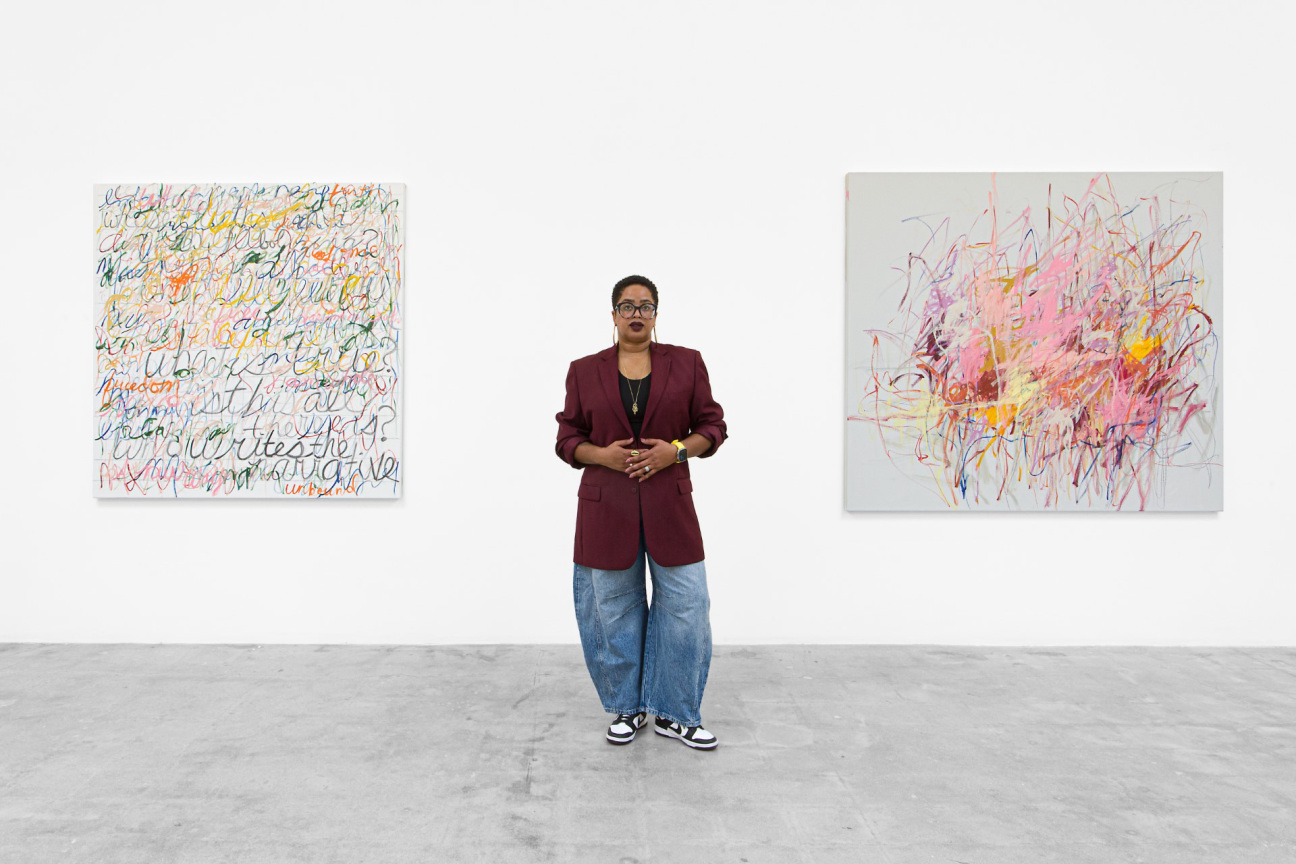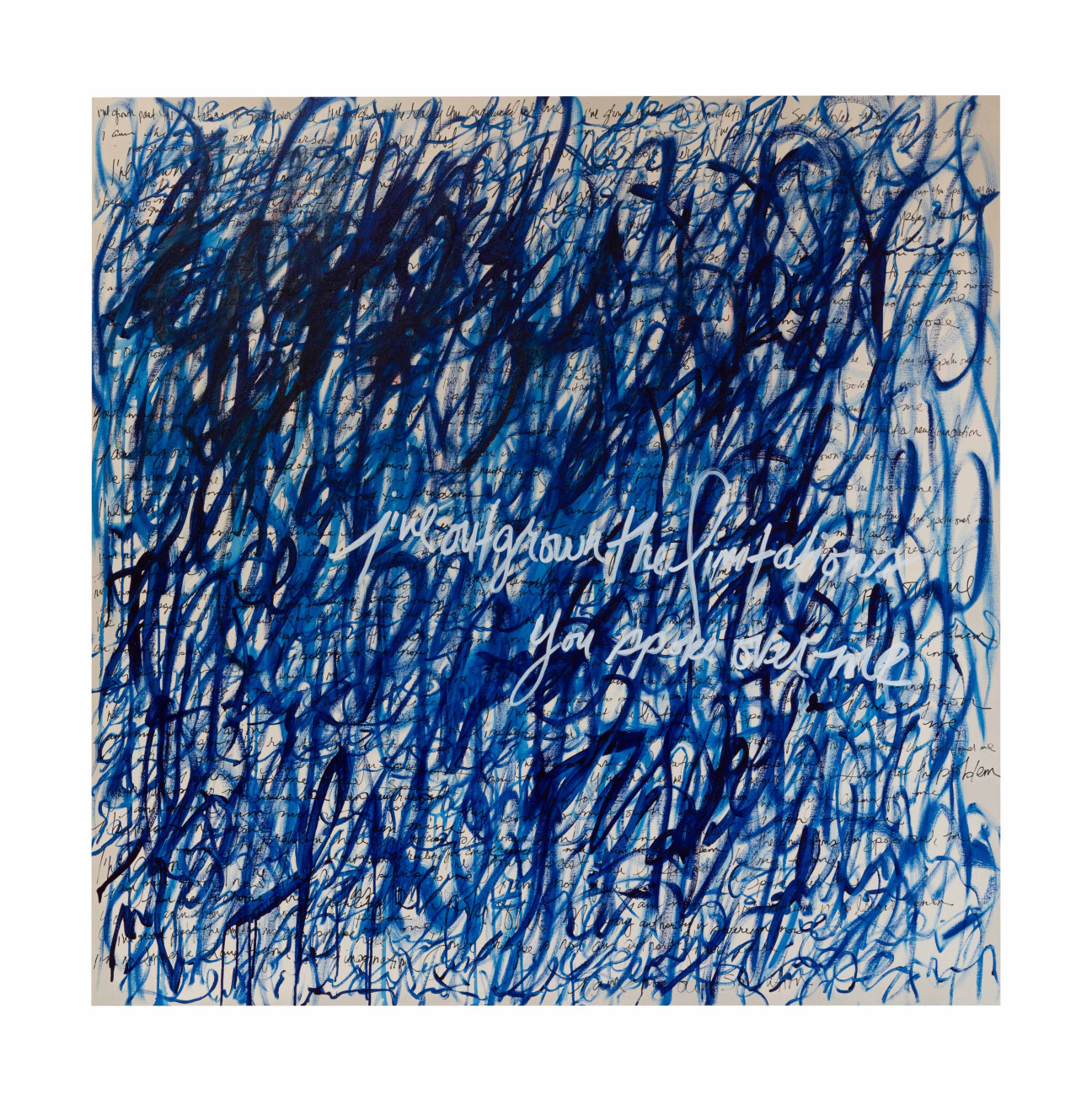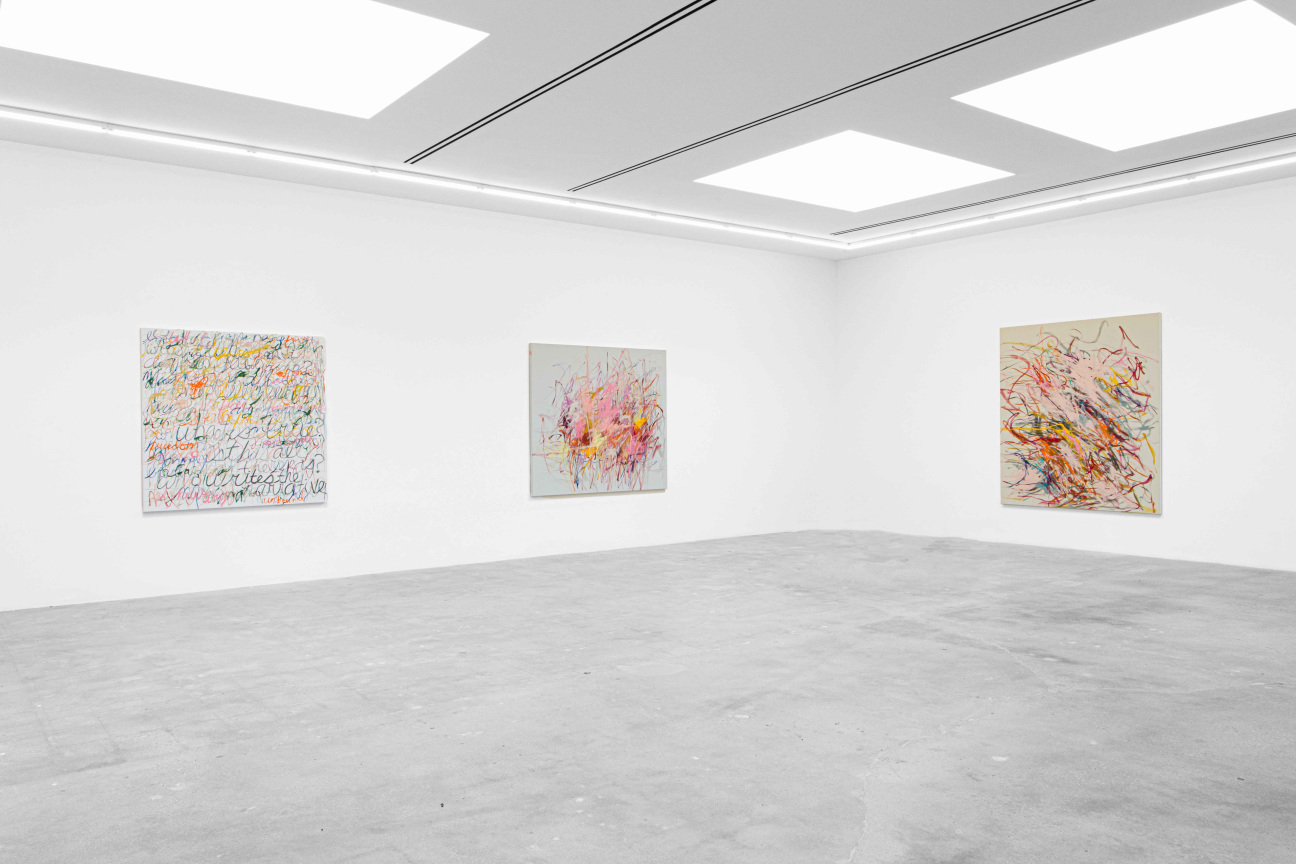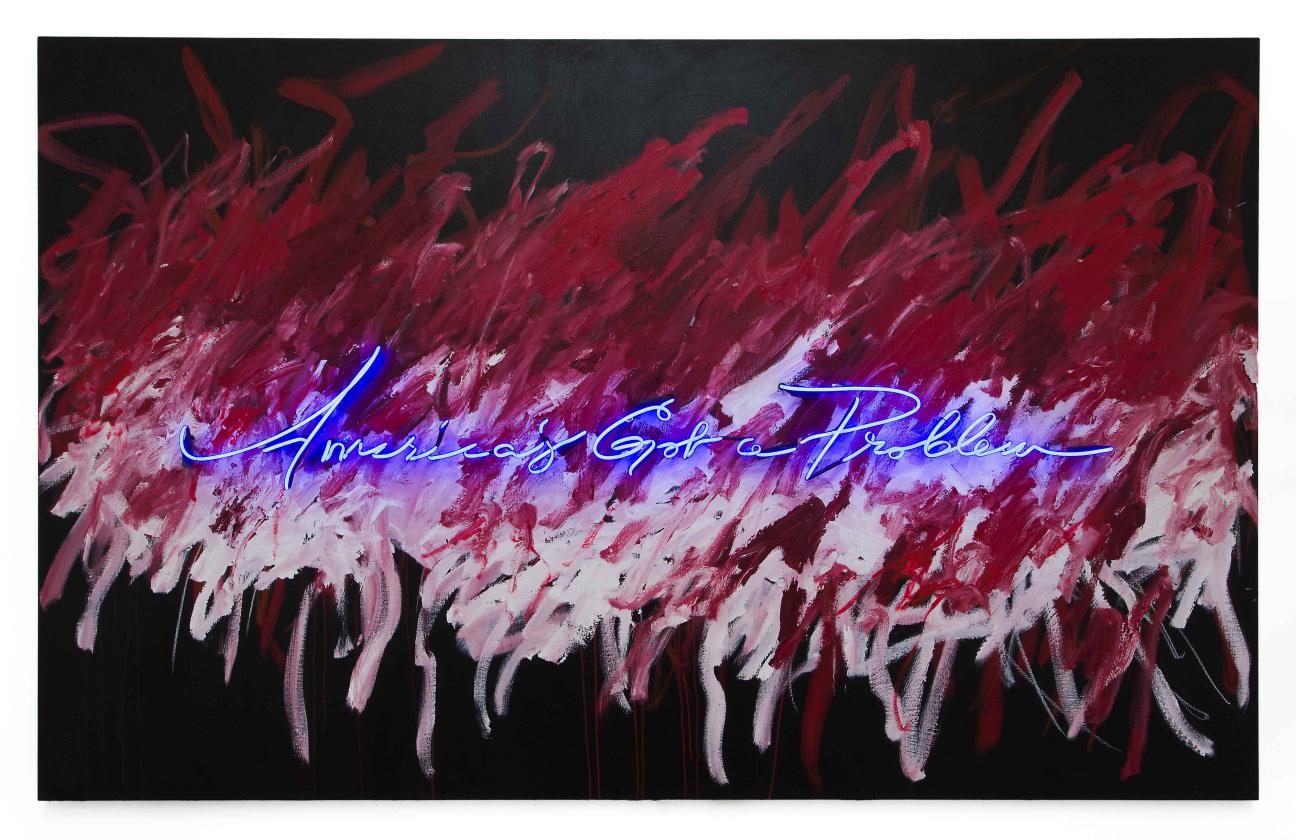
In 2011, A’Driane Nieves was shopping for arts-and-crafts supplies in a Walmart, at the recommendation of her therapist. She was struggling with postpartum depression after the birth of her second child, as well as a recent diagnosis of bipolar disorder. The therapist suggested that making something with her hands might help.
Until that point, creativity had manifested in Nieves’s life mainly through writing. When I spoke to her earlier this month, at her home in the suburbs of Philadelphia, she confessed that the first art exhibition she ever visited—a selection of paintings by Vincent van Gogh at the Philadelphia Art Museum—was for a college assignment. After searching the Walmart aisles for yarn and a crochet needle, Nieves noticed some discounted paint and canvas boards. Without thinking much about it, she tossed them into her cart as well.

The crocheting did not go well. “This shit is tedious,” she recalls. But painting was different. At first, she skipped the brushes, pushing the paint around with her fingers. She enjoyed it, and after some time, she noticed that it left her mind quiet and her body calm. “I felt very grounded and settled,” she says. She painted some more.
Sometime later, Nieves—then a mature student in her late 20s—was sitting in Humanities class during an introduction to modern art, with the professor showing works by abstract modernists. One of Nieves’s classmates piped up: “That looks like the stuff A’Driane does!” Nieves was mortified, but after class, her professor asked to see some of her work. Deeply impressed, she encouraged Nieves, who was studying to become a social worker, to take painting seriously.
Nieves began digging deeper into art history. The artists her professor had referenced were mostly men—“Where are the women?” Nieves wondered. “And if there are women, there have to be Black and Brown women. Who are they?” She discovered the work of the Black abstract painter Alma Thomas, who died in 1978, and later Bernice Bing, the Chinese-American Bay Area painter whose work is still little recognized today. These artists had a big impact on Nieves. “[They] helped me view painting not just as this therapeutic thing, but as something I could use to touch on the issues I was bringing up in my writing.”

This week, on Feb. 27, “self-evident truths,” Nieves’s first solo exhibition in Los Angeles, opens at Various Small Fires. The show’s title is a riff on an infamously fraught line in the United States Constitution: “We hold these truths to be self-evident, that all men are created equal…” It also reflects the tone of Nieves’s frank, uninhibited abstract works, which conjure up tangled thickets of furiously energetic, quasi-calligraphic marks. Like the abstract expressionism of Joan Mitchell or Cy Twombly, Nieves, now in her 40s, transmutes the struggles of her lived experience into something approaching joyful release, even ecstasy.
But there is plenty of pain in Nieves’s work, too. A harrowing sound piece in the exhibition explores her abusive father’s use of handwriting practice as a punishment. These days, the self-taught artist uses brushes as well as her fingertips to manipulate the acrylic and housepaint she applies to her Belgian linen canvases—in some paintings, cursive script is visible behind or amongst the abstract gestures. Other works are less personal, such as an imposing black-and-red painting bearing part of its title—an understatement (america’s got a problem), 2023—in blue neon script.

Nieves says that the process of painting is a “transformative, therapeutic experience,” which engages her whole self “emotionally, mentally, spiritually.” She hopes that, when viewers stand before her canvases, they are able to experience a similar kind of catharsis. But she also wants her paintings to embody something specific about her experience as a Black, neurodivergent, queer mom. “Identity in art can feel like a barrier. People think, ‘Because I don't share the same identity, this isn't for me.’ But, at least in my work, there are elements shared amongst people regardless of identity. I hope that, after seeing my work, people can look at each other and really experience the fullness of their humanity–without judgment.”










 in your life?
in your life?

